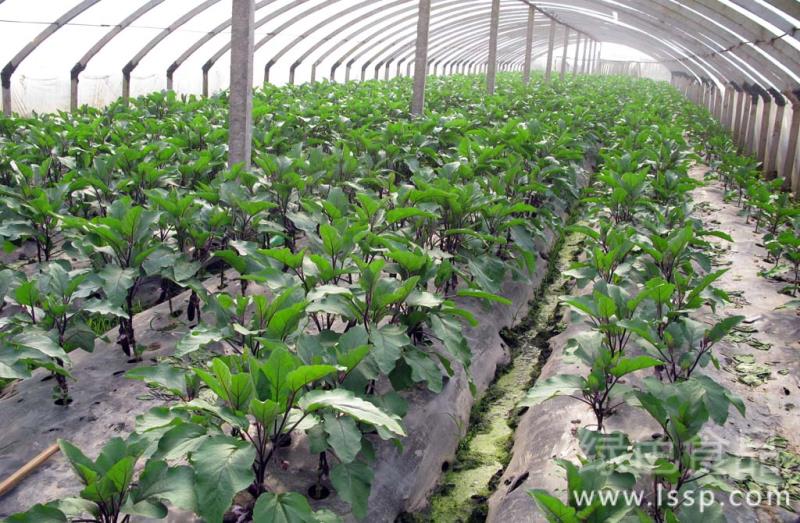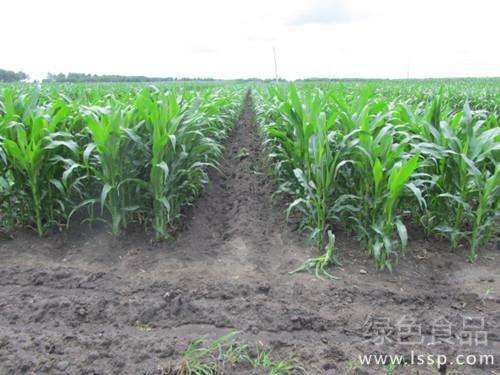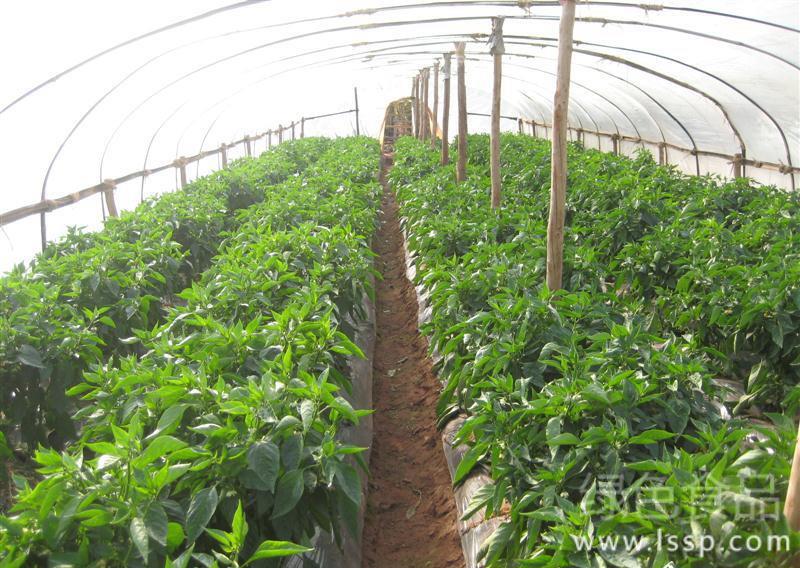Scientific fertilization Technology of pollution-free vegetables in Green Food cultivation

Pollution-free vegetables
With the continuous improvement of people's living standards, people pay more and more attention to safe, pollution-free vegetables. The so-called pollution-free vegetables refers to vegetables in which the content of harmful substances (such as pesticide residues, heavy metals, nitrite, etc.) is controlled within the permitted range set by the state, and people do not harm human health after eating. However, due to the long-term one-sided pursuit of vegetable production and the extensive use of chemical fertilizers, harmful substances such as nitrate are accumulated in vegetables. According to the literature, about 81% of the nitrate in human body comes from vegetables. If we eat vegetables with excessive toxic substances for a long time, it will lead to chronic accumulation of poisoning, and eventually lead to malformation, disability and even cancer, which will not only seriously damage the health of consumers, but also cause serious pollution to the agricultural ecological environment. At present, many countries in the world and China's Beijing, Shanghai, Shenzhen and other places implement the market access system for vegetables, strictly prohibit the sale of unqualified vegetable products into the market, thus greatly affecting the income of vegetable farmers. The research shows that the root cause of nitrate accumulation in vegetables is that the absorption exceeds assimilation. Therefore, scientific fertilization can effectively control the excessive accumulation of nitrate in vegetables, ensure the high yield, safety and quality production of pollution-free vegetables, and ensure people's health. We will promote vegetable exports to earn foreign exchange, protect the agricultural ecological environment and increase farmers' income.
1 mainly organic fertilizer, supplemented by other fertilizers
1.1 heavy application of organic fertilizer
The production of pollution-free vegetables should mainly be the application of organic fertilizer, and the ratio of pure nutrients of organic fertilizer to inorganic fertilizer should not be less than 1:1. Increasing the application of organic fertilizer can reduce the content of nitrate in vegetables, which is due to the slow release of nutrients by organic fertilizer through biodegradation of organic matter, which is beneficial to the absorption of nutrients by vegetables; at the same time, organic matter promotes the process of soil denitrification and reduces the concentration of nitrate in soil. There are many kinds of organic fertilizer, including retting manure, barnyard manure, biogas fertilizer, cake fertilizer and so on. Human and animal faeces should be fully mature, and domestic waste should be used after the removal of industrial wastes and harmless treatment of stacking fermentation. Organic fertilizer is mainly used as base fertilizer. The maximum application rate of organic fertilizer should be based on meeting the nutritional needs of crops. If compost based on chicken manure is used as base fertilizer on low-fertilizer vegetables such as melons, watermelons, tomatoes, beans, etc., the application rate per 667m2 should not exceed 500kg, and that per 667m2 on cucumber, eggplant, pepper and other fertile vegetables should not exceed 1000kg.
1.2 Auxiliary application of microbial fertilizer
At present, in the farmland with long-term application of chemical fertilizer, the ecological environment of microorganisms is destroyed, the number of beneficial microorganisms is reduced, and the organic matter in the soil can not be digested quickly, which hinders the decomposition of organic matter and the loss of nutrient elements. reduced the utilization rate of soil resources. The application of microbiological fertilizer such as amino acid fertilizer and humic acid fertilizer can expand and strengthen the activities of beneficial microorganisms in crop rhizosphere and improve crop nutritional conditions to make up for the shortcomings of limited chemical fertilizers, which should be selected according to the actual needs of production.
1.3 rational application of nitrogen fertilizer
In order to obtain a certain yield, some vegetable farmers use a large number of inorganic fertilizers, especially one-sided use of inorganic nitrogen fertilizer, which not only leads to a large accumulation of nitrate in vegetable products, but also causes a high degree of salinization of groundwater, which is harmful to health after human intake. The use of nitrate nitrogen fertilizer is prohibited in the production of pollution-free vegetables; ammonium bicarbonate has wide adaptability and does not leave harmful substances, so it is suitable for any crop, but it should be applied as far as possible to avoid volatilization loss and prevent ammonia from poisoning crops. Chlorine in ammonium chloride can weaken the activity of nitrifying bacteria in soil, thus inhibit nitrification, reduce the amount of nitrate that can be absorbed by crops in soil, and reduce the content of nitrate in crops. Ammonium chloride is a physiologically acidic fertilizer and should be used cautiously in acidic soil. Potato, melon and other taboo chlorine varieties should not be applied more. Urea and ammonium sulfate are also allowed to be used in the production of pollution-free vegetables, which should be selected and applied according to the actual situation. Nitrogen fertilizer should be harvested at intervals after topdressing, so that the nitrate absorbed by vegetables before harvest is assimilated. For fast-growing leafy vegetables which are easy to accumulate nitrate, the interval between topdressing nitrogen fertilizer should be a little longer.
(2) based on base fertilizer and supplemented by topdressing.
The accumulation of nitrate in vegetables is related to the content of nitrate in soil during harvest. If a large amount of nitrogen fertilizer is applied before harvest, the content of nitrate in the plant will increase during harvest. Therefore, the application of fertilizer in the production of pollution-free vegetables must be based on base fertilizer, which accounts for 50%-70% of the total fertilizer, and topdressing fertilizer should be applied reasonably during the growth period. Scientific use of foliar topdressing can not only reduce nitrate content, but also increase vegetable yield. It is an efficient fertilizer application method, such as spraying amino acid, ammonium molybdate and CO2 gas fertilizer on vegetables, without using foliar fertilizer containing hormones or hormones. Strictly control the time of the last fertilization. The study showed that 8 days after the application of nitrogen fertilizer was the safe initial period for vegetables on the market, and then, with the extension of time, the accumulation of nitrate decreased obviously. Therefore, about 10 days before vegetable harvest, it is strictly forbidden to apply fertilizer, especially available nitrogen fertilizer, and cover soil deeply with base fertilizer and topdressing fertilizer. In particular, the shallow application of nitrogen fertilizer is easy to contact with the air and oxidizes to nitrate under the action of aerobic bacteria. Deep application of nitrogen fertilizer can not only reduce fertilizer volatilization loss, prolong fertilizer supply time, but also reduce nitrate accumulation.
(3) implement formula fertilization and use special fertilizer for pollution-free vegetables.
The nitrate content of vegetables is positively correlated with the amount of nitrogen fertilizer applied, and the proportion of nitrogen, phosphorus and potassium is unreasonable, especially if too much nitrogen fertilizer is applied, the nitrate content of vegetables will be too high. Therefore, soil testing and formula fertilization technology must be implemented for pollution-free vegetables. Reasonable formula fertilization was carried out according to the fertilizer characteristics of vegetables and the fertility of the soil. The use of nitrogen, phosphorus, potassium and other trace elements and organic fertilizer to produce special fertilizer for pollution-free vegetables can not only meet the fertilizer needs of vegetables, but also improve the quality of vegetables and effectively reduce the content of nitrate. At the same time, this special fertilizer also plays an important role in improving the soil ecological environment, fertilizing the soil, enhancing the disease resistance and stress resistance of vegetables and reducing the pollution of pesticides and heavy metals. Especially for leafy vegetables, the edible part is close to the ground, the direct application of human and animal fertilizer is easy to cause disease-causing microorganisms and disease and insect egg pollution, while the application of special fertilizer can eliminate pollution sources and reduce pollution.
- Prev

Main Technical measures of Maize cultivation with large Ridge and double-row plastic Film mulching
Main Technical measures of Maize cultivation with large Ridge and double-row plastic Film mulching
- Next

Four simple methods Anti-freezing measures of Pepper seedlings in greenhouse in Winter
Four simple methods Anti-freezing measures of Pepper seedlings in greenhouse in Winter
Related
- Fuxing push coffee new agricultural production and marketing class: lack of small-scale processing plants
- Jujube rice field leisure farm deep ploughing Yilan for five years to create a space for organic food and play
- Nongyu Farm-A trial of organic papaya for brave women with advanced technology
- Four points for attention in the prevention and control of diseases and insect pests of edible fungi
- How to add nutrient solution to Edible Fungi
- Is there any good way to control edible fungus mites?
- Open Inoculation Technology of Edible Fungi
- Is there any clever way to use fertilizer for edible fungus in winter?
- What agents are used to kill the pathogens of edible fungi in the mushroom shed?
- Rapid drying of Edible Fungi

